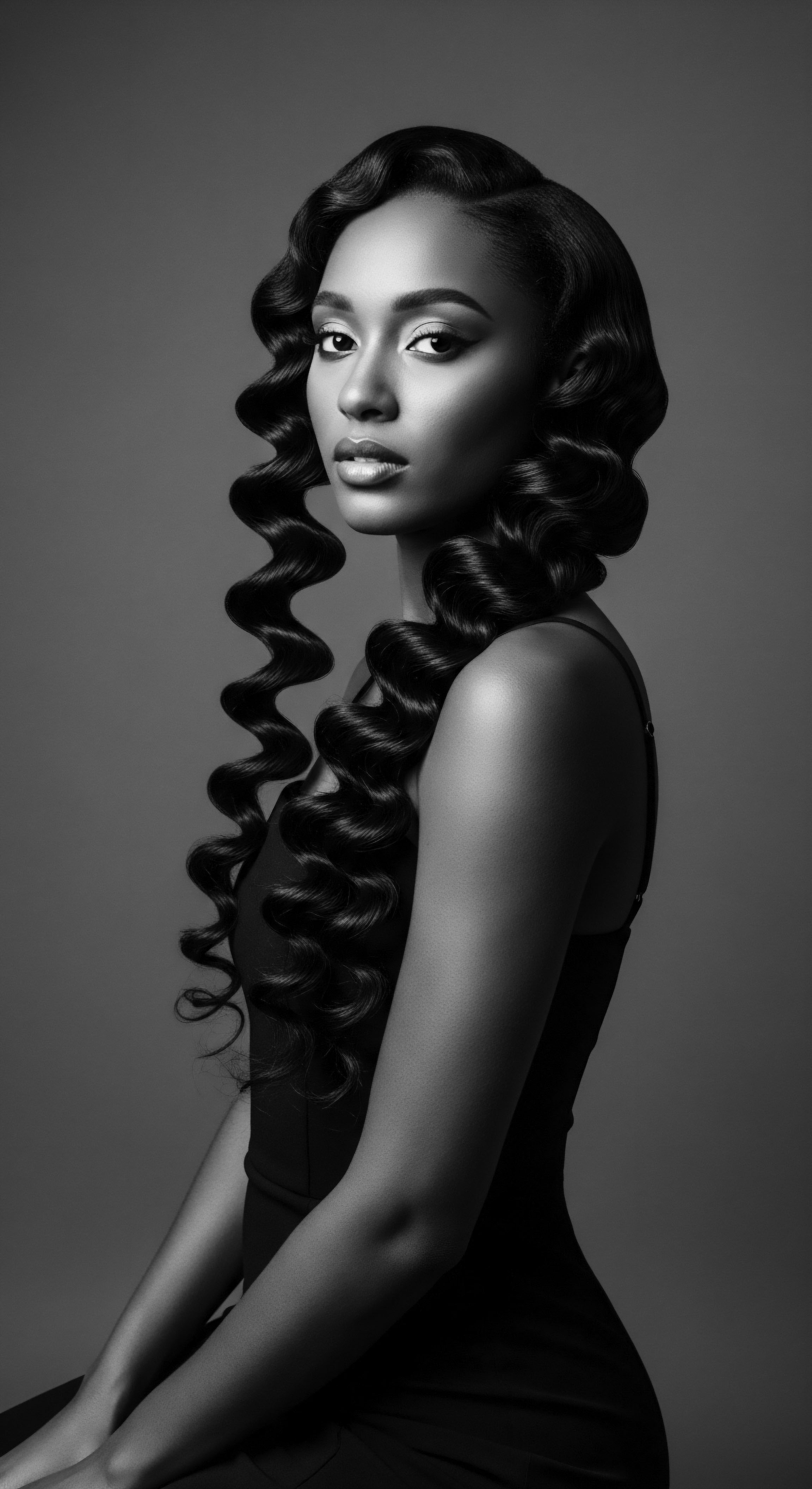
Roots
Consider the resilient strands, each a testament to lineages stretching back through sun-drenched savannas and whispering rainforests. To truly comprehend how ancestral African practices safeguard textured hair, one must first listen to the very fiber of a strand—its unique structure, its ancient whisperings. The journey commences not with a product, but with an understanding of hair’s elemental biology, viewed through a heritage lens, a view long held by those who knew its secrets intrinsically. This deep knowing, passed down through generations, recognized hair not merely as adornment, but as a living archive, a conduit, and a shield against the world’s elements.

The Architecture of Textured Hair
Textured hair, with its characteristic coils and curls, possesses an architectural complexity that sets it apart. Unlike straight hair, which typically boasts a circular cross-section, textured strands are often elliptical or flattened. This ovate shape, coupled with the uneven distribution of keratin proteins, causes the hair shaft to twist and bend as it grows, forming those captivating curls and coils we admire. Each bend in the helix represents a point where the hair’s outermost layer, the Cuticle, lifts slightly.
This inherent characteristic, while contributing to the hair’s visual richness, also renders it more prone to moisture loss and breakage compared to straighter hair types. Ancestral practices, honed over millennia, responded to this very structural reality. They were, in essence, practical science, born of observation and deep experience.
Beneath the cuticle lies the Cortex, the hair’s primary structural component, comprised of tightly packed keratin bundles. The cortex dictates hair strength, elasticity, and color. Ancestral methods recognized the importance of fortifying this inner core, ensuring the hair retained its spring and vigor.
The innermost layer, the Medulla, often discontinuous or absent in finer hair, contributes to the hair’s overall thickness and insulation. Understanding these components, even without modern microscopes, was embedded in the traditional wisdom of how to approach hair care, protecting its integrity from the inside out.

Classifying Curls by Inherited Wisdom
Modern systems classify textured hair by curl pattern—Type 3 for curls, Type 4 for coils—with subcategories ranging from A to C based on tightness. Yet, ancestral African societies possessed their own intricate, albeit unwritten, classification systems, often tied to Community Identity, spiritual significance, and practical applications. Hair, in many cultures, marked marital status, age, social standing, or even readiness for ritual.
The specific styling of coils and braids, the tightness of twists, the deliberate placement of adornments—all communicated a nuanced language understood by all. These classifications were not arbitrary; they reflected an intimate understanding of the hair’s natural tendencies and how best to work with them, ensuring the hair remained protected and honored.
The helical structure of textured hair, while visually striking, inherently presents unique vulnerabilities to environmental stressors.

An Essential Lexicon from Ancient Lore
The language of textured hair care, passed down through generations, often included terms for specific hair states, ingredients, and techniques. These terms, though varied across regions and dialects, consistently reflected a reverence for the hair and an intuitive understanding of its needs. For instance, many West African languages possess specific words for hair that is Nourished, hair that is Dry, or hair that is ready for a protective style.
The Yoruba term for hair, for example, ‘irun’, often carries connotations beyond mere strands, suggesting vitality and connection. Traditional lexicon wasn’t merely descriptive; it was prescriptive, guiding the community in proper practices that would safeguard the hair.
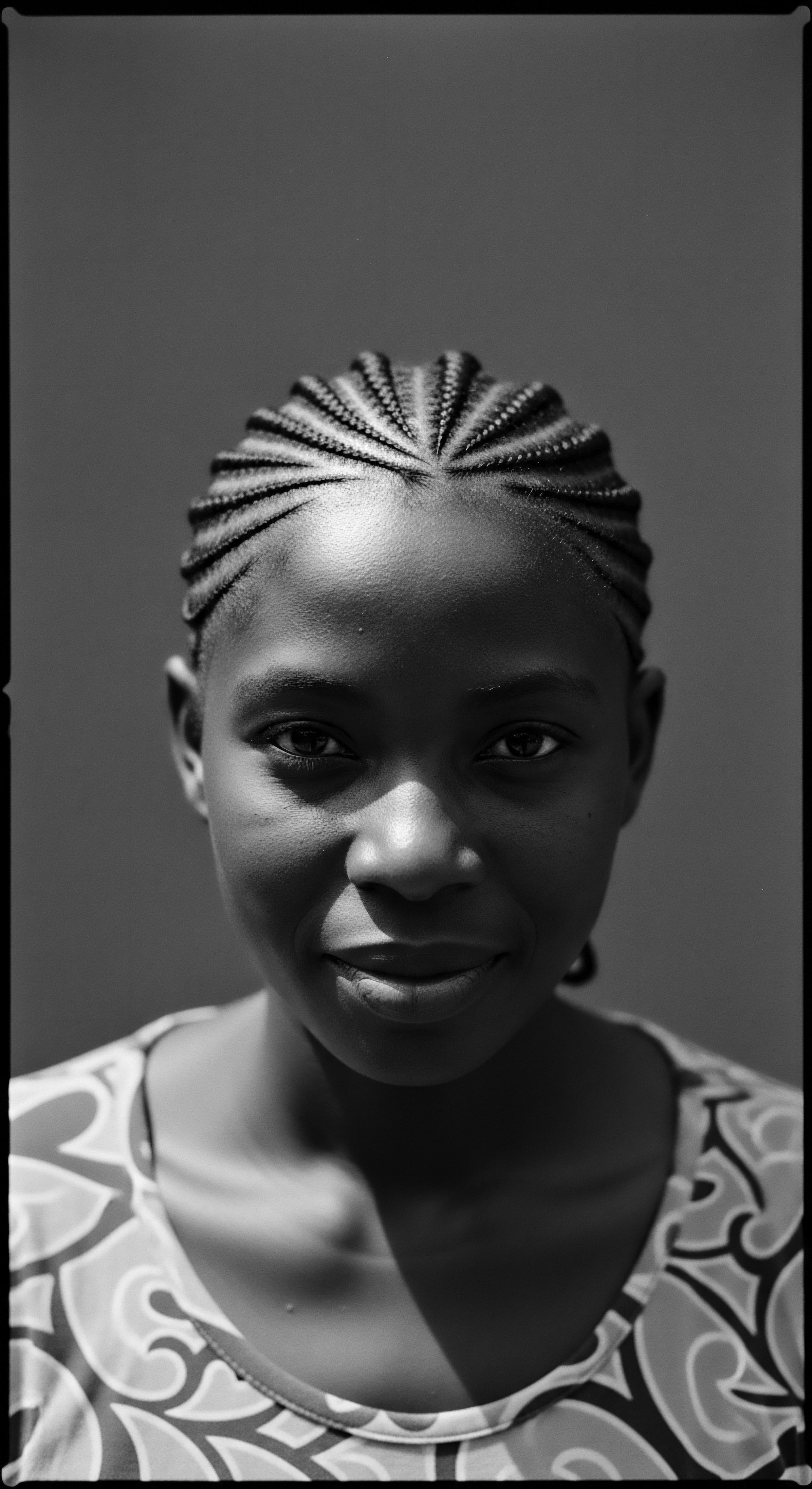
Hair’s Cycles and Environmental Whispers
Hair growth cycles—Anagen (growth), Catagen (transition), and Telogen (resting)—were understood implicitly through observations of hair shedding and regrowth. Ancestral practices aimed to extend the anagen phase by minimizing breakage and creating an optimal environment for growth. The harsh African sun, ever-present dust, and periods of water scarcity presented constant challenges to hair health. Practices evolved not just for aesthetics but as a direct response to these environmental factors.
Protective styles, for instance, shielded the scalp and hair shaft from direct sun exposure, mitigating moisture evaporation and UV damage. The application of natural butters and oils created a physical barrier, sealing in moisture and defending against dust and wind.
Consider the Himba women of Namibia, whose hair care practices provide a profound illustration of ancestral protection. They adorn their hair and skin with Otjize, a paste of ochre, butterfat, and aromatic resin. This deep red mixture, applied daily, serves multiple purposes ❉ it protects against the sun’s intense ultraviolet rays, repels insects, and cleanses the hair by trapping dirt which is then brushed out (Crang, 2017). The butterfat, rich in lipids, acts as a sealant, preventing moisture from escaping the hair shaft in the arid environment.
This tradition showcases a comprehensive understanding of environmental protection, cosmetic enhancement, and hygienic care, all intertwined with a deep sense of cultural identity and heritage. Their hair, known as “dreadlocks”, are formed and maintained through these continuous applications, showcasing how cultural practice and environmental response coalesce.
| Ancestral Observation Hair needs to be 'fed' to stay soft and strong. |
| Modern Scientific Understanding Hair requires external lipids and emollients to prevent moisture loss and cuticle damage. |
| Ancestral Observation Bundling hair keeps it from 'drying out' in the sun. |
| Modern Scientific Understanding Protective styles reduce surface area exposure to UV radiation and environmental pollutants, minimizing moisture evaporation. |
| Ancestral Observation Hair can signal health; dullness suggests imbalance. |
| Modern Scientific Understanding Hair porosity, elasticity, and sheen are indicators of internal nutritional status and proper external care. |
| Ancestral Observation The enduring legacy of ancestral hair care practices is increasingly validated by contemporary scientific understanding. |

Ritual
The daily and ceremonial interactions with textured hair in ancestral African societies were far removed from mere cosmetic acts. They comprised a living ritual, a sacred dialogue between the individual, the community, and the inherent vitality of the strands themselves. These practices, honed over generations, exemplify the art and science of hair styling, not as fleeting trends, but as protective measures, communal bonds, and expressions of identity. The hands that twisted, braided, and oiled hair were not simply styling; they were preserving a heritage, ensuring the continuity of healthy hair across time.
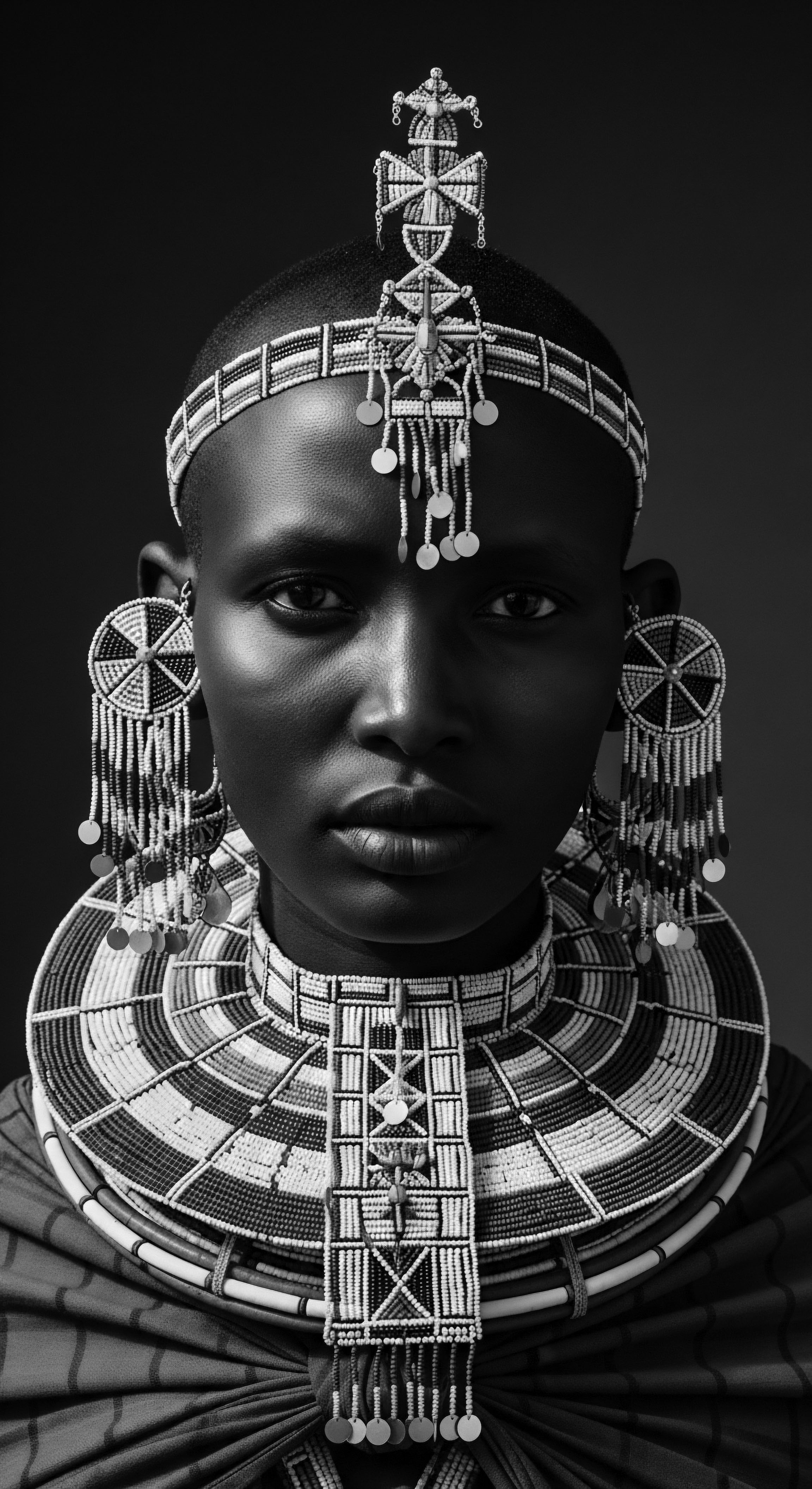
Protective Styling as an Ancient Guard
Protective styles, a hallmark of textured hair care today, trace their origins to ancient African civilizations. Styles such as Braids, Twists, and Cornrows were not just aesthetic choices; they were ingenious engineering solutions to safeguard hair. By braiding or twisting small sections of hair together, ancestral practitioners minimized tangling, reduced mechanical stress, and decreased the hair’s exposure to environmental aggressors.
This approach kept the cuticle layers smooth and sealed, reducing breakage and allowing hair to retain its length. The intricate patterns of cornrows, often depicted in ancient Egyptian art and sculptures from various West African kingdoms, served as protective canvases for hair growth, allowing the scalp to breathe while the hair was neatly tucked away.
In many communities, the act of styling was a communal affair, particularly among women. Mothers, sisters, and aunties would gather, sharing stories, wisdom, and techniques as they carefully styled one another’s hair. This communal aspect ensured that the knowledge of specific protective styles—from the robust Fulani braids to the delicate Dinka coiling—was passed down with fidelity. These sessions often involved the application of traditional oils and butters, ensuring each strand was adequately coated and sealed before being gathered into its protective form.

The Techniques of Natural Definition
Beyond intricate braided styles, ancestral practices included numerous methods for defining the natural curl pattern without heat or harsh chemicals. Techniques such as Finger Coiling, achieved by twisting individual strands around a finger to create defined ringlets, were commonplace. The practice of Bantu Knots, where sections of hair are twisted and coiled tightly against the scalp, served as both a temporary style and a method for stretching and defining curls without heat, leaving the hair soft and well-formed upon unraveling.
These methods relied on patience and a deep respect for the hair’s inherent texture. They often incorporated water and simple, plant-based conditioning agents. The emphasis was always on working with the hair’s natural inclination, enhancing its inherent beauty while ensuring its resilience. The result was hair that was not only aesthetically pleasing but also robust and well-maintained, ready to withstand the rigors of daily life.
Traditional hair adornments and tools were often imbued with symbolic meaning, reflecting cultural values and status.
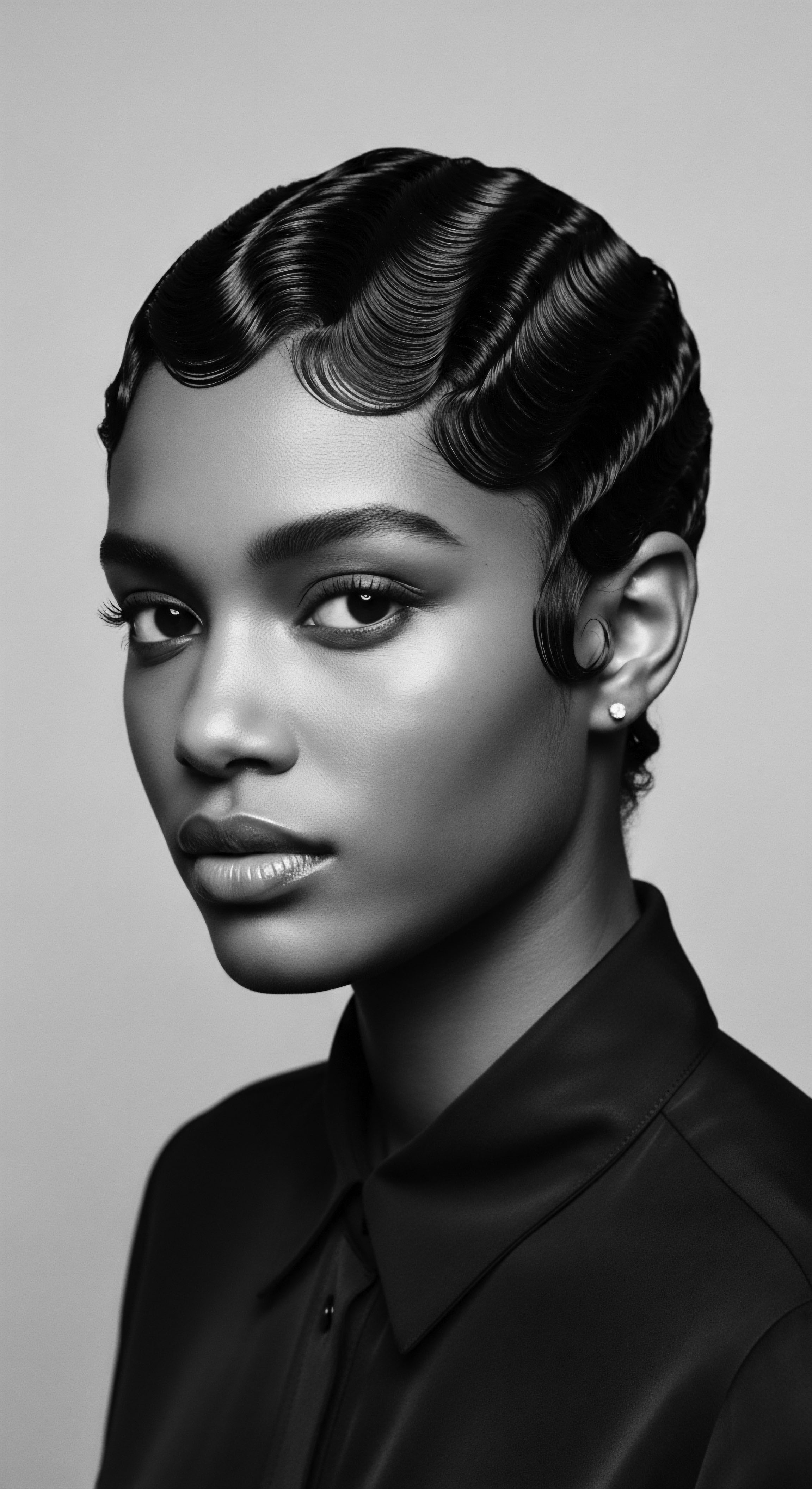
Tools Crafted with Purpose
The tools employed in ancestral African hair care were simple yet incredibly effective, often crafted from natural materials. Combs, carved from wood or bone, featured widely spaced teeth designed to gently detangle the dense, coiled strands without causing excessive breakage. These combs were often smoothed and polished, ensuring they glided through the hair, minimizing friction. Hairpins and decorative adornments, made from materials such as cowrie shells, beads, or metal, were not only for embellishment but often served to secure styles, keeping the hair in place and protecting it from snagging.
Consider the historical Ghanaian wooden comb, a beautifully carved implement, often bearing traditional Adinkra symbols. These combs were more than just detangling tools; they were objects of art and cultural significance, used for generations, and passed down as heirlooms. Their design—wide-toothed and often with a broad handle—ensured a gentle approach to textured hair, reducing tension and preventing breakage during the detangling process, a common vulnerability for tightly coiled hair. Such tools underscore a patient, methodical approach to hair care that prioritizes preservation over speed or force.
- Wooden Combs ❉ Crafted from diverse indigenous hardwoods, these combs were designed with wide, smooth teeth to gently separate textured strands, minimizing breakage and static.
- Hairpins and Adornments ❉ Often made from bone, ivory, beads, or metal, these were used to secure intricate styles, preventing unraveling and protecting the hair from environmental elements.
- Fingers ❉ The primary tools, used with remarkable skill for detangling, coiling, twisting, and applying natural emollients with precision.
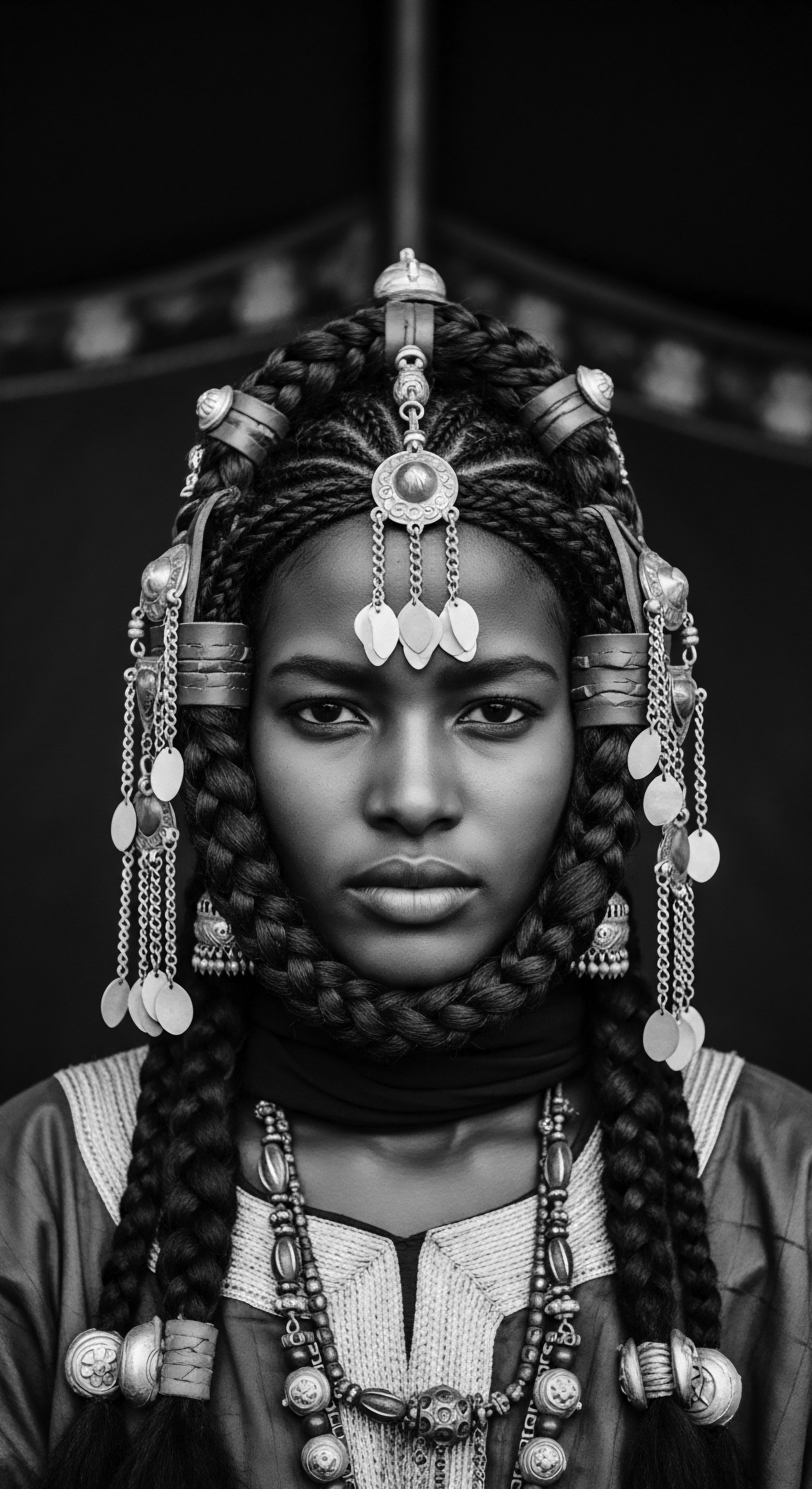
The Transformation Through Emollients
Traditional styling was often inseparable from the application of natural emollients. Shea Butter (from the shea tree, common across West Africa), Argan Oil (from Morocco), and various other indigenous plant oils and butters were consistently applied. These substances, rich in fatty acids and vitamins, coated the hair shaft, providing a protective barrier that sealed in moisture, imparted sheen, and added slip, making the hair more manageable for styling.
The act of oiling the scalp and strands before braiding, for instance, created a micro-environment within the protective style that fostered hair health. The emollients reduced friction between strands, preventing the mechanical abrasion that leads to breakage, especially during manipulation. These natural products were also integral to defining curls, providing a gentle hold that allowed the hair’s natural pattern to flourish without stiffness or artificiality. The careful selection of these ingredients reflects a deep ecological knowledge and a profound connection to the land and its offerings for wellbeing.

Relay
The safeguarding of textured hair in ancestral African societies was not a sporadic effort; it was a continuous relay of wisdom, a daily commitment woven into the fabric of life. This consistent approach to care, spanning from daily rituals to specialized treatments, reveals a holistic understanding of hair health. It demonstrates that true protection arises from a regimen of attentiveness, ingredient knowledge, and solutions deeply rooted in heritage. The practices that protected the hair of ancestors continue to offer profound guidance for the challenges and aspirations of today.
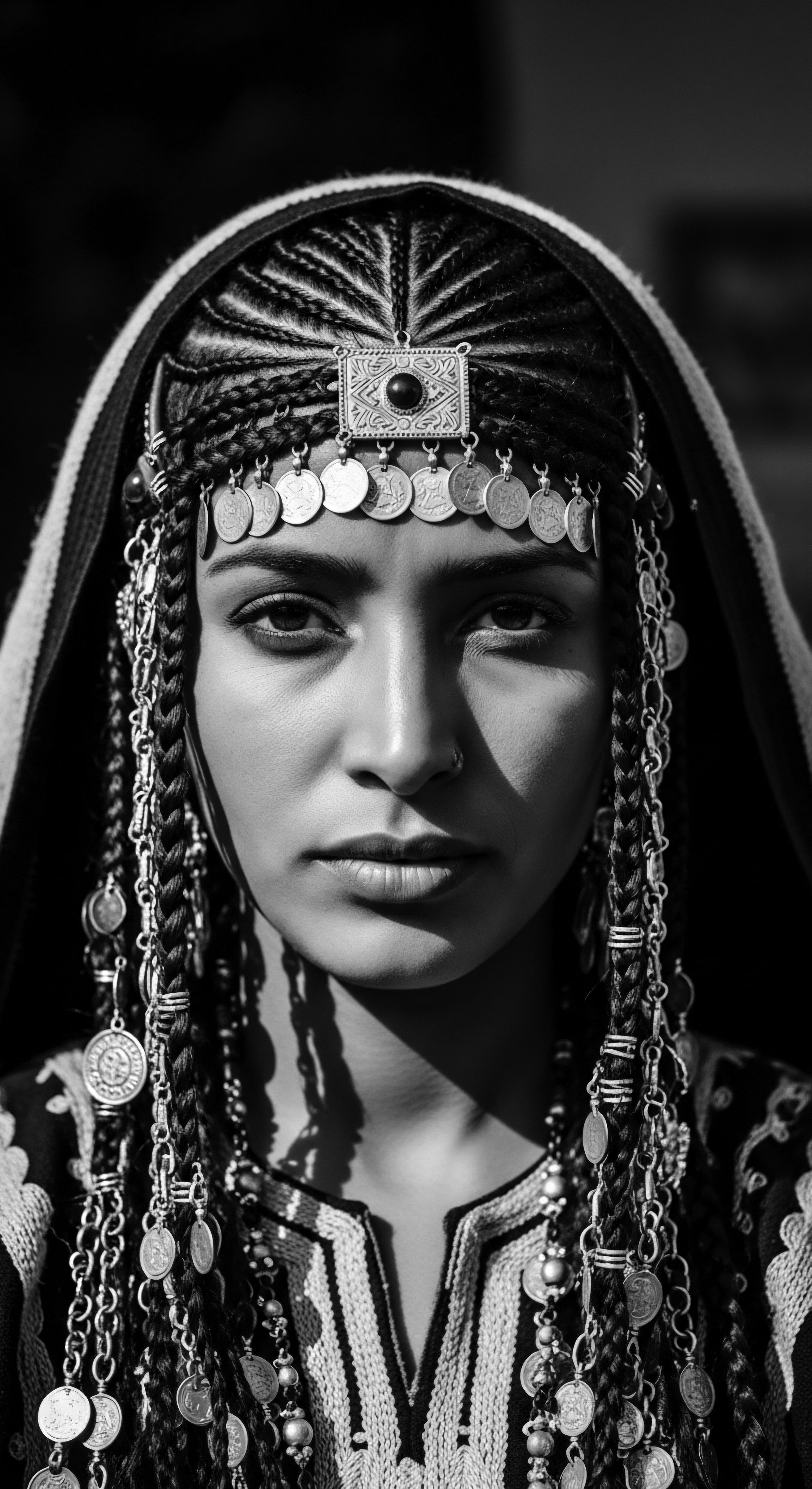
Designing Daily Care by Ancient Precepts
Ancestral hair care was never about a single product; it encompassed a personalized regimen, intuitively crafted over time. While not formalized in written guides, these routines were learned through observation and participation from an early age. They typically involved regular cleansing using natural soaps or clays, followed by thorough detangling and moisturizing. The frequency and specific methods varied by climate, hair texture, and daily activities, yet the core principles remained constant ❉ cleansing without stripping, moisturizing without weighing down, and protecting from mechanical damage and environmental stress.
The concept of a “wash day” or regular cleansing was present, often involving naturally derived saponins from plants like the African black soap (from plantain skins, cocoa pods, and shea tree bark) for gentle purification of the scalp and hair. Following cleansing, conditioning agents from plants—mucilaginous leaves or seeds—were applied to soften and detangle. The final step consistently involved sealing in moisture with oils or butters. This sequential application, mirroring the modern Loc Method (liquid, oil, cream), speaks to an inherent, scientifically sound understanding of moisture retention.

The Nighttime Sanctuary ❉ Protecting Hair in Repose
One of the most critical, yet often overlooked, ancestral practices for protecting textured hair involved nighttime care. While specific historical documentation of “bonnets” as we know them might be scarce, the principle of protecting hair during sleep was universally understood. People would often wrap their hair in soft cloths, sometimes made from woven plant fibers or animal skins treated to be pliable. These coverings served to minimize friction against coarse sleeping surfaces, preventing tangles, breakage, and the absorption of essential moisture from the hair.
The Himba women, for instance, would maintain their otjize-coated hair by carefully positioning it or wrapping it to preserve the intricate styles and the protective qualities of the paste. This deliberate action acknowledged that the hours of sleep, though seemingly passive, were a period of vulnerability for hair. The consistent effort to preserve hairstyles and the hair’s integrity overnight meant less manipulation and restyling in the morning, further reducing mechanical stress on the strands. This quiet ritual, performed in the privacy of one’s dwelling, was a testament to the continuous, subtle acts of preservation that built up to long-term hair health.
Traditional ingredients offered a pharmacopeia of natural solutions for hair protection and vitality.

Treasures from the Earth ❉ Ingredient Insights
Ancestral African practices protected textured hair through an intimate knowledge of local botanicals and natural resources. The efficacy of these traditional ingredients is increasingly supported by contemporary scientific study.
For example, Shea Butter, a lipid extracted from the nut of the African shea tree (Vitellaria paradoxa), has been a cornerstone of West African hair care for centuries. Its protective properties are multi-layered. It forms a semi-occlusive barrier on the hair shaft, reducing transepidermal water loss and thereby maintaining hair hydration (Parker et al. 2017).
This barrier also shields the hair from environmental pollutants and reduces friction, which is particularly beneficial for high-porosity textured hair. Shea butter’s rich composition of fatty acids (oleic, stearic, linoleic), vitamins A and E, and triterpenes contributes to its emollient, anti-inflammatory, and antioxidant capabilities, soothing the scalp and supporting healthy hair growth.
Other potent ingredients include:
- African Black Soap ❉ A gentle cleanser derived from plantain peels, cocoa pods, and shea tree bark. Its mild, purifying action respects the hair’s natural oils, preventing the stripping that can lead to dryness.
- Rhassoul Clay ❉ Sourced from the Atlas Mountains of Morocco, this mineral-rich clay was used for deep cleansing and conditioning. It absorbs impurities and excess oil without harsh detergents, leaving hair soft and voluminous.
- Chebe Powder ❉ Originating from Chad, this blend of herbs (including lavender croton and prunus mahaleb) is traditionally mixed with oils and applied to the hair to reduce breakage and promote length retention, indicating its ability to fortify the hair shaft.

Resolving Hair Concerns with Heritage Wisdom
Ancestral practitioners addressed common hair concerns like dryness, breakage, and tangles using a preventative and remedial approach. Dryness was combated with regular applications of humectant-rich plant extracts and emollient oils, creating a moisture-rich environment. Breakage was minimized through protective styling, gentle detangling methods, and the continuous nourishment of the hair shaft with strengthening botanical infusions.
Tangles, a common challenge for textured hair, were managed with meticulous finger detangling and the use of wide-toothed combs, always with the aid of a lubricating agent like diluted plant mucilage or oil. The emphasis was on patience and consistent, gentle manipulation.

Holistic Influences on Hair Vitality
The ancestral view of hair health was inherently holistic, extending beyond topical applications. It encompassed diet, spiritual connection, and communal wellbeing. A diet rich in indigenous fruits, vegetables, and lean proteins provided the internal nutrients necessary for robust hair growth. Spiritual practices often revered hair as a connection to the divine or to ancestral spirits, fostering a respectful and mindful approach to its care.
Moreover, the strong communal bonds characteristic of many African societies meant that hair care was often a shared activity, reinforcing knowledge, providing emotional support, and collectively maintaining traditions that preserved hair health and cultural identity. The vitality of hair was seen as a reflection of the vitality of the individual and their connection to their heritage.
| Ancestral Practice Regular application of shea butter and plant oils. |
| Contemporary Relevance for Textured Hair Protection Utilizing leave-in conditioners and hair oils to seal moisture, reduce friction, and protect the hair shaft from environmental damage. |
| Ancestral Practice Wearing braided or twisted styles for extended periods. |
| Contemporary Relevance for Textured Hair Protection Embracing protective styles like box braids, twists, and cornrows to minimize manipulation and promote length retention. |
| Ancestral Practice Using wooden or bone combs with wide teeth. |
| Contemporary Relevance for Textured Hair Protection Opting for wide-tooth combs or finger detangling to gently work through knots and prevent breakage. |
| Ancestral Practice Wrapping hair in soft cloths for sleep. |
| Contemporary Relevance for Textured Hair Protection Using satin or silk bonnets and pillowcases to reduce friction, prevent moisture loss, and preserve hairstyles overnight. |
| Ancestral Practice The foundational principles of ancestral African hair care continue to inform and fortify contemporary textured hair routines, affirming an enduring heritage of protection. |

Reflection
The journey through ancestral African practices protecting textured hair reveals more than mere techniques; it uncovers a profound philosophy, a reverence for the very soul of a strand. From the elemental architecture of the helix to the rhythmic rituals of daily care, each practice speaks volumes about a deep, inherited wisdom. This wisdom, born of intimate observation of hair’s nature and the environment’s demands, provided comprehensive solutions for protection and vitality.
It is a legacy etched into every coil, every twist, a living archive of resilience and beauty. The practices, often rooted in communal bonds and spiritual connection, transformed routine care into acts of cultural preservation.
As we acknowledge the enduring power of these ancient ways, we see how they continuously guide our contemporary understanding of textured hair. The meticulous care, the intentional use of natural emollients, and the artistry of protective styles—all are echoes from a profound past, inviting us to approach our hair not as a challenge, but as a cherished inheritance. The protection offered by these ancestral methods was never solely physical; it extended to the spirit, fostering a connection to identity and a celebration of a unique, vibrant heritage. To care for textured hair with such wisdom is to participate in an unbroken lineage, honoring the past while shaping a radiant future.

References
- Crang, M. (2017). Cultural Geography ❉ Thinking About Space, Place, and Landscape. Routledge.
- Ndemufayo, M. (2019). An Ethnobotanical Study of Plant Species Used for Cosmetic and Hair Care Purposes by the Himba People of Kunene Region, Namibia. University of Namibia. (While a thesis, its subject matter is relevant to the Himba example and would draw from anthropological data.)
- Parker, T. L. et al. (2017). A Review of the Cosmeceutical and Medical Uses of Shea Butter. Journal of the American Academy of Dermatology, 76(6), AB134. (A medical/scientific journal relevant to ingredient efficacy)
- Opoku-Nsiah, E. (2014). African Cultural Hair Practices ❉ An Ancient Legacy. Black Classic Press. (A book focused on historical hair practices)
- Owusu-Ansah, P. (2011). African Hair Care and the Natural Hair Movement. University of Massachusetts Amherst. (A scholarly work exploring the history and cultural significance)
